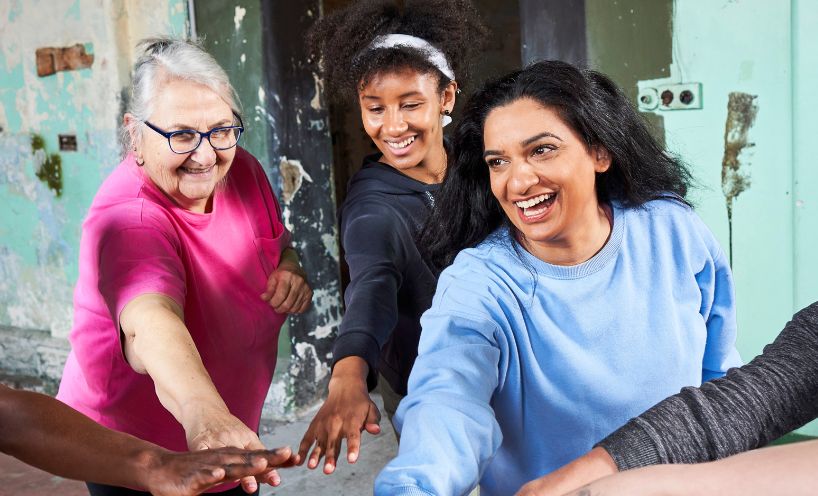
The Victorian Government has taken great strides towards making the state fairer and more equal for all.
We’ve invested in the things that matter to women and girls, and we’re creating more opportunities for them than ever before.
Victorian women are among the most highly educated in the world. In May 2022, 38.2% of Victorian women were university educated, compared with 31.6% of men. And more women are studying, including in traditionally male-dominated areas such as IT and engineering.
In recent years, more women than ever before have joined the workforce, with the female participation rate reaching a record high of 63.4% in March 2023. Over the four years to March 2023, the proportion of working-age Victorian women in paid work rose by 3.9 percentage points. Of more than 170,000 jobs created and taken up by women during this time, nine out of 10 have been full-time roles.
These strong labour market conditions have driven a sharp fall in the female unemployment rate, which is around its lowest level in nearly 50 years, while the female underemployment rate is around a 20-year low.
While positive, these numbers only tell part of the story.
The gender pay gap remains stubbornly high at 13.5%, meaning the average Victorian working woman earns $256.20 a week less than her male equivalent.
Women are often excluded from full-time work, as they continue to shoulder the major share of unpaid work. The division of labour within Australian families, with women as caregivers and men as breadwinners, is one of the most skewed in the developed world, with women doing 2.3 more hours of unpaid work and 2.2 fewer hours of paid work per day than men.
Australian women are twice as likely to be working part-time as men, largely because of their higher unpaid caring load. Women are under-represented in higher paying occupations such as managers, technicians, trades workers and machinery operators and drivers, often because the inflexibility of these roles is incompatible with women doing the majority of unpaid work.
Inflation and cost of living pressures are mounting. We know childcare fees are crippling family budgets and holding back parents – mainly mums – from returning to work. And we know women are also at much greater risk of financial hardship in retirement. At retirement age (60–64 years), 23% of women have no superannuation, compared with 13% of men.
More women suffer from chronic health conditions, especially mental health conditions. The proportion of Victorian women living with two or more chronic diseases rose from 19.3% in 2015 to 22.1% in 2019, and is now almost 6% higher than the rate for men.
Women are also far more likely than men to experience physical, sexual and emotional violence by an intimate partner.
There has been significant progress and investment in family violence reforms following the Royal Commission into Family Violence, including making it easier and safer to report, and the rate of women who report experiencing family violence by an intimate partner is increasing.
In 2021, 23% of women reported having experienced violence by an intimate partner since the age of 15 – up from 17% five years earlier. This figure compares with 7.3% of men. And a 2018 national survey revealed that 39% of Australian women had experienced sexual harassment at work in the previous five years, compared with 26% of men.
Women continue to shoulder enormous burdens and face immense barriers to equal opportunity, from cost of living pressures like childcare and women’s healthcare, to job insecurity and the risk of family violence.
Removing these barriers gives us a chance to build a fairer Victoria. It also represents a huge economic opportunity for Victorian businesses that would have access to a wider and deeper talent pool. Australia’s GDP would increase by 11% if the gender employment gap was closed – that is if the same proportion of women were employed as men. And the Australian economy would gain $8 billion if women moved from tertiary education into the workforce at the same rate as men.
We established the independent Inquiry into Economic Equity for Victorian Women (the Inquiry) to address long-standing systemic inequality and find solutions for problems such as unequal pay and workplace barriers to women‘s success.
Work is already underway to address the recommendations of the Inquiry, completed in September 2022. These include delivering strategies to support, upskill and mentor women in non-traditional sectors; driving the use of gender disaggregated and intersectional data across the public service to help us better understand who is using our services so that we can design them to meet their needs; and developing plans to better support the work of the care and community sector.
But the Victorian Government recognises that gender equality is a long-term vision requiring deep cultural and structural change, and there is always more work to do.
That’s why this Budget invests around $2.7 billion in initiatives that directly address women’s needs and work toward improving outcomes for women.
We’re putting women’s health first, with more than $497 million going directly to improving access to women-specific health services around Victoria.
We’re strengthening workforce participation, investing in skills and training, supporting women to become leaders in their field, and taking steps to protect women and children from family violence.
Through this Budget and a new gender equality strategy we will take action on these issues. Because if we want to build a better, fairer and more equal Victoria, our work starts with doing what matters for Victorian women.
Reviewed 22 May 2023

